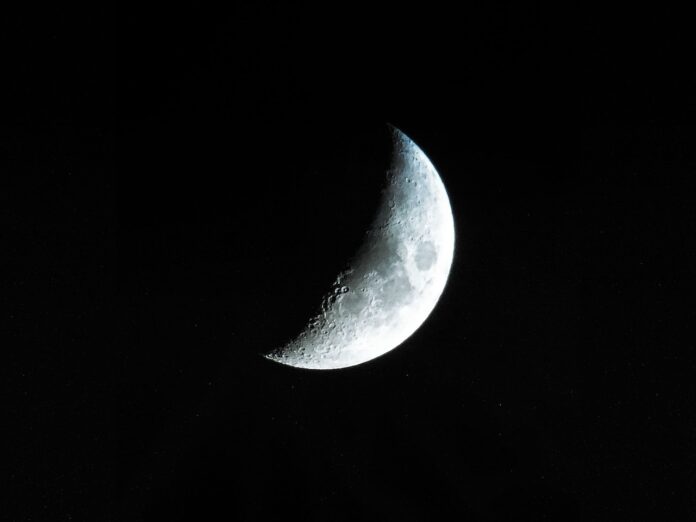
In the vast expanse of the cosmos, few objects hold as much fascination as our celestial companion, the Moon. Its tranquil presence has captivated humanity for eons. However, let us embark on a thought experiment, a cosmic journey, to explore the unimaginable world where the Moon, our faithful companion, explodes into fragments, forever altering the fabric of our universe.
Let’s explore several scenarios and potential consequences.
Moon Exploded, Now what? Celestial Fireworks Unleashed!
Picture this: a mesmerizing celestial fireworks show as the Moon surrenders to its explosive demise. The once serene lunar surface transforms into a cascading symphony of lunar debris. Shimmering fragments disperse in all directions, creating a breathtaking spectacle of light and motion that captivates the eyes of astronomers fortunate enough to witness this cosmic event.
The “spectacle” would unfold against the backdrop of our vast universe, with the remnants of the Moon creating a mesmerizing tapestry of celestial confetti. The debris would traverse the darkness, their trajectories governed by the laws of physics and gravity. Such an extraordinary display would serve as a potent reminder of the dynamic and ever-evolving nature of our cosmos.
Tidal Turmoil: A World Transformed

As we’ve written in one of our previous article the Moon’s gravitational influence on our oceans is a fundamental force behind the ebb and flow of tides. However, the sudden obliteration of the Moon would disrupt this delicate equilibrium, unleashing tidal disorder upon our planet. Without the Moon’s stabilizing presence, the rhythm of the tides would be thrown into disarray, with unpredictable consequences for coastal ecosystems, marine life, and human settlements along the world’s shorelines.
The absence of a gravitational anchor would introduce chaos into the once-predictable patterns of the tides. Coastal regions would experience irregular surges, leading to flooding in unexpected areas. The delicate balance between land and sea would be upended, reshaping coastlines and challenging human adaptation to the altered tides.
Note: Moon gravitational force impacts water also in our bodies or in cup of water. But those “tides” in our bodies or in water cups are not noticeable.
Lunar Lunacy: Nature’s Mysterious Rhythms Altered
For centuries, the Moon’s ethereal glow has inspired awe and stirred the imaginations of poets and lovers alike. It has shaped the behavior of countless nocturnal creatures, influencing their mating rituals, navigation, and biological cycles. But in a world where the Moon is no more, the harmony of these lunar-driven rhythms would fade.
Nocturnal animals would find themselves disoriented and their finely tuned internal clocks thrown into disarray. The gentle moonlit serenade that once guided their nightly endeavors would be silenced. Migratory patterns, mating rituals, and the synchronization of reproductive cycles would be disrupted, with far-reaching implications for ecosystems and the delicate balance of nature.
Celestial Dance Reimagined: The Night Sky Transformed
The night sky, an eternal canvas of stars and celestial bodies, would undergo a profound transformation in the absence of the Moon. The familiar face that has graced countless starlit evenings would vanish, leaving behind an altered cosmic ballet. The Moon’s absence would provide an opportunity to witness the universe in a new light, unobstructed by its glow.
Astronomers would recalibrate their telescopes to study the deep reaches of space without interference from the Moon’s brightness. The absence of its reflected sunlight would reveal distant galaxies, nebulae, and other celestial wonders with greater clarity. The night sky would become an expansive playground for astronomers, inviting them to explore the depths of our universe like never before.
The Planet’s Protector: Earth’s Shield Unraveled

Beyond its aesthetic and poetic allure, the Moon plays a critical role in stabilizing Earth’s axial tilt, known as obliquity. This stability is vital for maintaining the planet’s climate patterns and seasons. Without the Moon’s gravitational influence, Earth’s axis would become destabilized, leading to unpredictable and extreme climate fluctuations.
The absence of a stable axial tilt would result in dramatic shifts in global weather patterns. Regions accustomed to mild climates could experience sudden and severe temperature swings, while others may face prolonged periods of extreme heat or cold. The delicate balance between seasons would be disrupted, challenging agricultural practices, and impacting global food production. Humanity would be forced to adapt to a world of climatic uncertainty.
Space Debris Menace: A Perilous Journey
The explosion of the Moon would not only transform our terrestrial environment but also create a new threat in the realm of space exploration. The remnants of the Moon would form a dense cloud of debris, posing a significant hazard to satellites, space stations, and future space missions.
The remnants of the Moon, ranging from small fragments to larger chunks, would populate Earth’s orbit. Collisions with this debris field would become a constant concern for spacecraft and satellites, increasing the risk of catastrophic damage. The crowding of orbital space would necessitate meticulous planning and coordination to ensure the safety of human-made objects traversing this perilous territory.
Lunar Science Lost: Uncharted Mysteries
The Moon has been a playground of scientific discovery, offering invaluable insights into the early history of our solar system and the universe. The hypothetical destruction of the Moon would not only deprive us of a celestial neighbor but also erase a rich source of scientific data and exploration.
The lunar surface, adorned with craters and ancient geologic formations, would become an inaccessible realm. The opportunity to study the Moon’s impact history, which sheds light on the frequency and magnitude of cosmic collisions, would be lost. The secrets buried within the Moon’s regolith, holding clues to our cosmic past, would remain forever silent.
Astronomical Mysteries Unveiled: Lessons from the Aftermath

Paradoxically, the destruction of the Moon would offer a unique window into the aftermath of a celestial cataclysm. Astronomers would diligently observe the remnants of the explosion, studying the dynamics of the debris cloud and the gravitational interactions that unfold. This unprecedented opportunity would deepen our understanding of celestial mechanics and the fate of other astronomical bodies.
Analyzing the trajectories and compositions of the Moon’s remnants could yield groundbreaking insights into the physics of catastrophic disruptions in celestial bodies. The lessons learned from this extraordinary event would reverberate across the scientific community, providing crucial knowledge for understanding similar phenomena occurring elsewhere in the universe.
Human Lunar Exploration Disrupted: A New Frontier
The destruction of the Moon would destroy the dreams of returning humans to its surface. The remnants of the Moon would present insurmountable challenges for manned missions, requiring alternative propulsion methods and complex orbital maneuvers. The absence of the Moon as a steppingstone for space exploration would force humanity to redirect its efforts towards other destinations.
Space agencies and private enterprises would refocus their attention on exploring new frontiers, such as Mars, asteroids, or even the outer planets. The lessons learned from lunar missions would find new applications in uncharted territory, accelerating our progress in human space exploration and pushing the boundaries of our cosmic reach.
A Cosmic Reminder: Appreciating the Fragility of the Cosmos
The hypothetical explosion of the Moon would serve as a poignant reminder of the fragility of celestial bodies and the impermanence of the cosmos. It would ignite a global conversation about the importance of monitoring and understanding the celestial objects in our cosmic neighborhood.
The incident would galvanize scientists and astronomers to intensify their efforts in detecting and tracking potentially hazardous asteroids and comets that could pose a threat to Earth. International collaborations would strengthen as nations unite in the pursuit of planetary defense, developing technologies and strategies to mitigate the risks of future cosmic catastrophes.
The Moon Lives On: Symbol of the Eternal

Even in the absence of its physical presence, the Moon would continue to live on in the collective consciousness of humanity. Throughout history, the Moon has inspired myths, literature, and culture, transcending its tangible form. Its symbolic resonance as a beacon of mystery, beauty, and the vast cosmic tapestry that envelops us would endure.
Artists, poets, and storytellers would find new inspiration in the void left by the Moon’s explosion. They would weave tales and create works of art that celebrate its memory and contemplate the profound implications of its absence. The Moon would forever remain a powerful reminder of our place in the cosmos and the wonders that exist beyond our reach.
And then finally, if humans one day end up in some kind of matrix, Moon would bi still present in simulation.
Conclusion: Contemplating the Unthinkable: The Moon’s Enduring Influence
The hypothetical scenario of the Moon’s explosion takes us on a journey through the realms of science, nature, and imagination. While the consequences of such an event are staggering, it is important to remember that the Moon’s impact on our world extends far beyond its physical presence. Its influence on our tides, our culture, and our dreams is ingrained in the fabric of humanity.
As we ponder the ramifications of an exploding Moon, we gain a deeper appreciation for the interconnectedness of our universe. The fragility of celestial bodies and the impermanence of our cosmic environment remind us of the urgency to study, protect, and cherish the wonders that surround us. The Moon, whether in physical form or as a symbol of the eternal, will forever guide our gaze towards the infinite expanse of the cosmos.
Note: If you’re interested in similar articles, on topic of “What would happen if”, you can check:
- What If Earth Had Two Moons?
- What Would Happen If The Sun Exploded
- What If Earth Had Rings?
- What would happen if water disappeared on Earth?
- What Would Happen if Yellowstone Supervolcano Erupted?
- How Many Earths Can Fit In Jupiter?
- What Would Happen If Jupiter Disappeared?
- What would happen if gravity suddenly disappeared?
- …and many more.



























